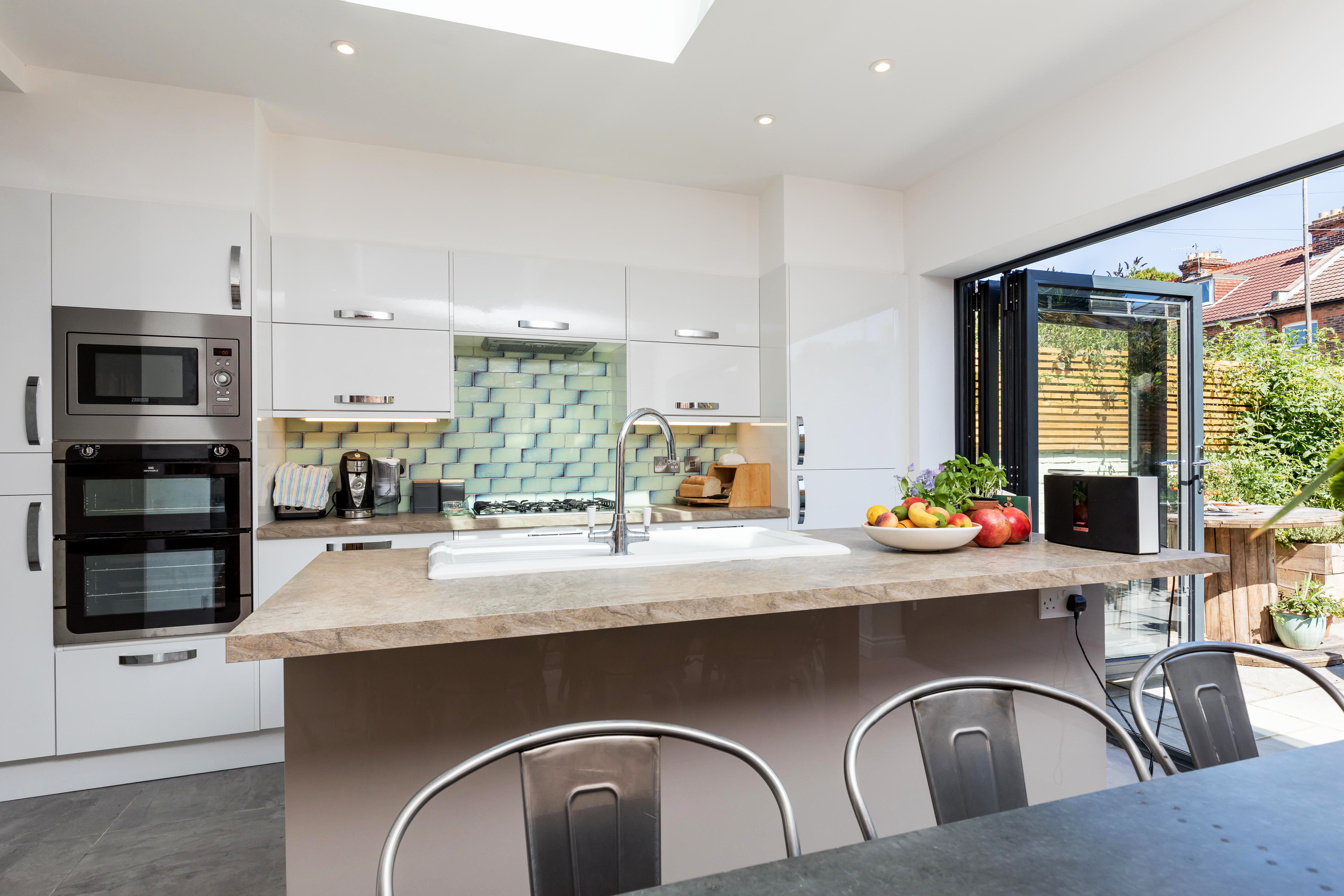Choosing the best kitchen worktops
Choosing the best kitchen worktops
It’s a big decision choosing the best worktop for your kitchen. The options may seem endless, but it’s worth taking the time to get it right.
Whether you are designing that beautiful kitchen you’ve always dreamed of or simply revamping an existing one, a worktop needs to be tough and practical to use as well as stylish. Kitchen worktops come in a myriad of different materials from natural and engineered stone to solid wood and plastic laminate. So, to help you make the best choice for your kitchen, we’ve looked at some pros and cons.
 Picture supplied by Portico Marketing
Picture supplied by Portico Marketing
Budget
Ultimately, what you choose may be driven by what you can afford. Costs vary hugely from ultra-luxurious marble or granite at £700 per sqm to as little as £30 per sqm for laminate. Cheaper options can be attractive but may not be as hard--wearing as stone or composite countertops. Engineered quartz is a popular mid-range option at around £175- £450 per sqm. The type of material you choose can also affect the labour costs. Laminates can be installed by competent DIYers while most other materials will need templating by an expert.
Granite & marble worktops
The trend for open-plan living has led to more luxury in kitchens. Glossy granite and marble worktops are luxe materials and make a stunning addition to any home. The colour and pattern of each slab is unique, but they’re priced accordingly. Granite is harder than marble so better suited to kitchen countertops as it’s more resistant to chips and scratches. Both marble and granite worktops are durable, can take high temperatures and should look good for years with a bit of tlc. Natural stone is porous, so without a seal - which may need topping up - liquids will penetrate and stain.
Wooden worktops
Wooden worktops, such as oak, can add warmth and character to a kitchen of any style – traditional or modern. If properly cared for, wood should age beautifully and can be affordable. On the downside, timber is easily scorched and stained, so you can’t place hot pans directly onto the wood surface or use it as a chopping board and any water spillages must be immediately dried. Oil needs to be regularly applied to protect against water marks and warping. If you want wood, it’s probably best combined with a different material around the sink and hob.
Composite or quartz worktops
Composite worktops, also referred to as ‘engineered worktops’ or ‘quartz worktops,’ are generally made up of a blend of quartz crystals ground into a fine sand and mixed with resin. These slabs combine the beauty of the natural material with the technical performance of a highly engineered product. They are non-porous, resistant to bacteria, heat-resistant and highly durable. They can be used in any area of the kitchen, including next to the sink and hob. Composite or quartz worktops are harder wearing and more colour-consistent than natural stone.
Corian and solid-surface worktops
Engineered stone worktops can offer a high-quality finish but are less pricey than natural stone. Made from a blend of acrylic resins, colouring and minerals, they can be totally seamless with one-piece moulded worktops, sinks and splashbacks. Worktops come in a range of colours and can be easily shaped to fit corners and curves. Solid-surface worktops are resistant to moisture, bacteria and heat. Corian is the market leader. Other brands include Silestone. Solid surface worktops are available at a range of price points to suit different budgets.
Laminates
Laminates are among the most affordable worktops on the market. They are available in a wide variety of styles from imitating the look (although not the feel) of real marble or wood to high-gloss, glitter finishes. Laminates are non-porous and easy to wipe clean. However, they aren’t resistant to heat or suitable as a cutting surface. Made from wooden particle board with a decorative plastic coating, they are usually cheaper than solid wood. If you choose laminate, it’s worth paying a bit extra for a higher quality material as it should last longer. Laminate work surfaces are trickier to repair than solid wood which can be simply sanded and refinished.
Stainless steel & glass
Stainless steel is a favourite with restaurant kitchens and great for creating an industrial chic look in your home. It is very durable, waterproof, heat and bacteria resistant but prone to scratching. Glass worktops meanwhile can make a sleek, stylish centrepiece to your kitchen while boosting light levels. There worktops are non-porous, so easy to maintain and clean. Spills and splashes can easily be wiped away and glass is heat-resistant, making it a practical and elegant choice.
Mix and match
It’s on-trend to mix and match different worktop materials which opens up more possibilities. If you like the look of chunky timber but wood around the sink can lead to mould and warping, try pairing it with an engineered stone. Or you might like to use an expensive slab of marble as a focal point, such as a kitchen island, with something more affordable in other areas. There’s room for more than one material in your kitchen. Always get samples to check that you’re happy with your choice of worktop(s) before making a final decision. From the exact colour to how the material feels and complements the rest of your kitchen décor, it will help you pick the perfect countertop.
